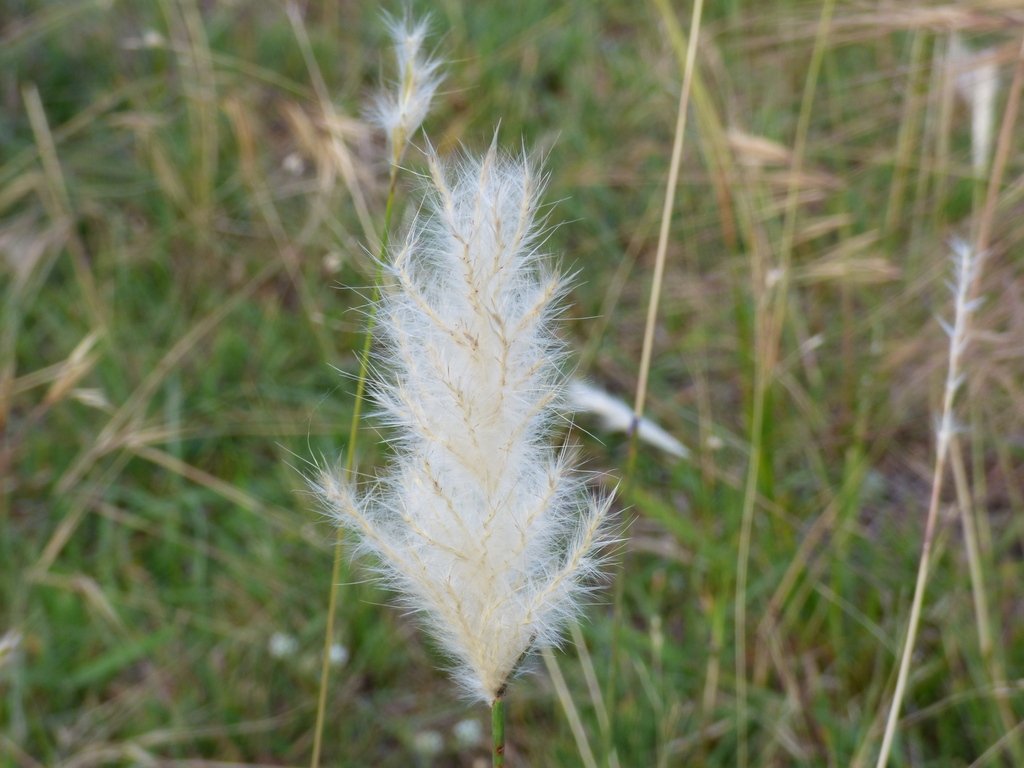Silver Beard Grass
Bothriochloa laguroides
Family: Poaceae
Perennial bunchgrass growing almost 4’ tall. Blooms June through October—the flowers embedded in silky hairs. Leaves are a dull green with a silvery white or tan appearance, which turns from red to burnt orange in the fall.
This species is distinguished by its long (ca. 1 cm) geniculate (abruptly bent) awns, copious hairs within the inflorescence that obscure the spikelets and give the inflorescence a silvery look, and slightly pubescent nodes.
Plants from the United States and northern Mexico belong to B. laguroides subsp. torreyana, which differs from B. laguroides subsp. laguroides in its glabrous, or almost glabrous, nodes, long internode hairs, and pilose throat region.
Full to part sun, best on regular landscape irrigation.
This species has a superior ability to reseed itself after soil disturbance, over grazing, or drought which makes it an excellent species for the restoration of disturbed sites. Fair forage value for livestock and wildlife. It is usually only grazed in its early growth stage.
Bothriochloa is from the Greek bothros, a pit or hole, and chloe or chloa, grass, alluding to the small pit on the first glume of some species in the genus; laguroides means like the genus Lagurus, a genus of grasses with large plumose flower heads, which in turn derives its name from lagos for a hare and oura for tail. There are 37 species of Bothriochloa native to many countries on all inhabited continents and many islands.
Found on rocky slopes and sandy plains from 2,000-5,500 ft. in the southern half of the US, from California east to Georgia; south through Greater Antilles, Mexico, Central and South America.
Photo by Max Licher, SEINET
Bothriochloa laguroides on iNaturalist



